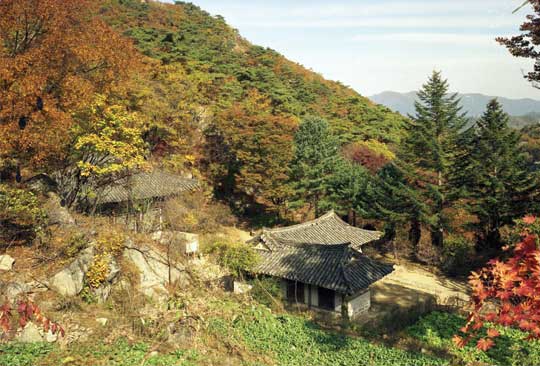Kwanum Temple in Kaesong
Kwanum Temple, situated close to the Pakyon Falls at the foot of Mt Chonma in Pakyon-ri, Kaesong City, was first built in 970 and was renovated in 1646 as it is seen now.
Placed in a scenic spot called “Kaesong Kumgang” from olden times, it was originally composed of 5 buildings, but now there remains Taeung Hall, a living quarter, a 7-storeyed stone pagoda and famous Kwanum Cavern.
As a main edifice of the temple, Taeung Hall is of 3 bays (8.4m) in front and 3 bays (6.61m) in side and is crowned with a hipped roof supported by hullim columns (a column whose lower part is thicker than the upper part).
The decoration of its floriated doors is famous for its delicacy and gorgeousness among the same kinds in Korea. In particular, the openwork patterns of the back doors depict the lotus flowers in a vase but one leaf of the door is left unfinished.
Living quarter is a gabled house with a shape of “L” in plane of 4 bays (10.7m) in front, 4 bays in western side and 2 bays in eastern side.
The 7-storeyed stone pagoda, 4.77 meters high, standing to the west in front of Taeung Hall is an excellent one representing the stonework of Koryo Dynasty.
A statue of a bodhisattva called Avalokitesvara which is a pride of the temple is enshrined in the Kwanum Cavern at the rocky cliff next to Taeung Hall.
The statue is 1.2 meters high and made of milky marble. The bodhisattva is in a seated position, wears a splendid coronet and is dressed up. And the pleats flowing down gently look fine and graceful.
Kwanum Temple bearing the features of ancient buildings is one of the well-balanced excellent architectural remains of our country.
